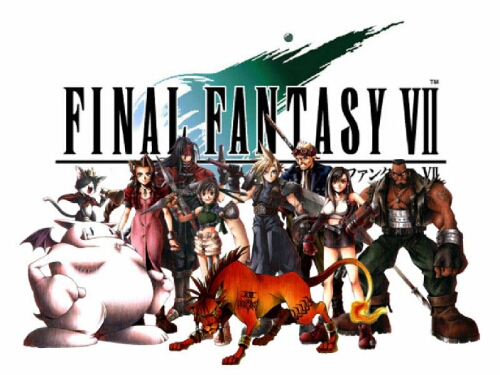London MCM expo
 The first, and arguably the biggest cosplaying event is the London MCM expo. Held twice a year, the MCM expo holds a wide variety of shows and exhibitions aimed at not only anime fans but everything from star trek to rainbow brite. The MCM expo is not directly a solely cosplay convention as it covers a whole range of games, films and comics spanning a wide range of platforms and mediums.
The first, and arguably the biggest cosplaying event is the London MCM expo. Held twice a year, the MCM expo holds a wide variety of shows and exhibitions aimed at not only anime fans but everything from star trek to rainbow brite. The MCM expo is not directly a solely cosplay convention as it covers a whole range of games, films and comics spanning a wide range of platforms and mediums.The MCM exp plays host to quite a number of stalls and shows, and puts on a number of events each day. The MCM expo is also one of two English cosplay events which are hosting this years 'eurocosplay' competition; An event which challenges the best cosplayers to pitch against others throughout Europe in order to win prizes and recognition for their work.
Amecon

Amecon is another large cosplaying event. With other 1,000 attendees, Amecon is one of the most popular conventions in the U.K. Unlike the London MCM expo, Amecon is purely for anime fans, catering to their need through showings, bring and buys, and of course cosplay! Amecon is held once every two years, rotating with it's sister convention, Ayacon.
Amecon is well known for it's cosplay and anime fan tailored events. A few events that will be re held at this years convention include;
- Cosplay Triathlon
- Catwalk
- Omake
- Cosplay ball
- Cosplay workshop
This year Amecon will be held at the end of August and is the 2nd of the two conventions this year that will hold the Eurocosplay event. As well as this event, Amecon hold the unique cosplay ball. The cosplay ball entails the attendees dressing up and creating their own 'formal' cosplay wear, which often results in flowing Disney princess ball gowns. Here at the ball cosplayer have the opportunity to be professionally photographed.
Ayacon
 Ayacon is Amecon's sister convention, each held on rotating years. Ayacon is very similar to Amecon, hosting the same events and principals. Being a convention that was held last year it's much easier to gather more in-depth information on events held at these conventions. After doing a bit of research into this convention I found various and interesting events that were used last year, a few include;
Ayacon is Amecon's sister convention, each held on rotating years. Ayacon is very similar to Amecon, hosting the same events and principals. Being a convention that was held last year it's much easier to gather more in-depth information on events held at these conventions. After doing a bit of research into this convention I found various and interesting events that were used last year, a few include;- Wig styling
- Taiko drumming workshop
- Trading card room
- Gaming room
- J-pop lounge
- karaoke
- Japanese tea ceremony
Tokonatsu
 Tokonatsu is a annually held festival unique to others as it is held outside, as opposed to being held in a building. Tokonatsu holds many open air events, including the 'open air masquerade' as well as many other outdoor themed events. Events such as treasure hunts and others encourage participants to work together to win. I wasn't really able to dig up to much information on this event due to it being canceled recently, however I did discover that because Tokonatsu is an open air event no accommodation is offered, instead a fee is introduced for the ticket holders which allows them to pitch a tent on the conventions grounds.
Tokonatsu is a annually held festival unique to others as it is held outside, as opposed to being held in a building. Tokonatsu holds many open air events, including the 'open air masquerade' as well as many other outdoor themed events. Events such as treasure hunts and others encourage participants to work together to win. I wasn't really able to dig up to much information on this event due to it being canceled recently, however I did discover that because Tokonatsu is an open air event no accommodation is offered, instead a fee is introduced for the ticket holders which allows them to pitch a tent on the conventions grounds.Kitacon
 Kitacon holds a similar layout to both Amecon and Ayacon, however instead it is held each year in concession. Kitacon is a fairly new convention available to cosplayers. 2009 was its first year being held in the U.K, and due to it being so successful is being continued this year.
Kitacon holds a similar layout to both Amecon and Ayacon, however instead it is held each year in concession. Kitacon is a fairly new convention available to cosplayers. 2009 was its first year being held in the U.K, and due to it being so successful is being continued this year.Kitacon holds it's own omake 'variety show' event, renames 'Kits got talent' where participants get up on stage and showcase their talents. Kitacon allow anyone to enter this competition with any talent, which doesn't necessarily have to be anything to do with cosplay or anime.
Like the other conventions, Kitacon has guest speakers and guests which come from many professions. Voice actors from popular animes have been know to show up as well as Japanese vocalists and bands.
There are other smaller events in the U.K, however I felt that keeping this blog entry relevant to the more larger of the conventions was more suited to the information I needed to find out.









